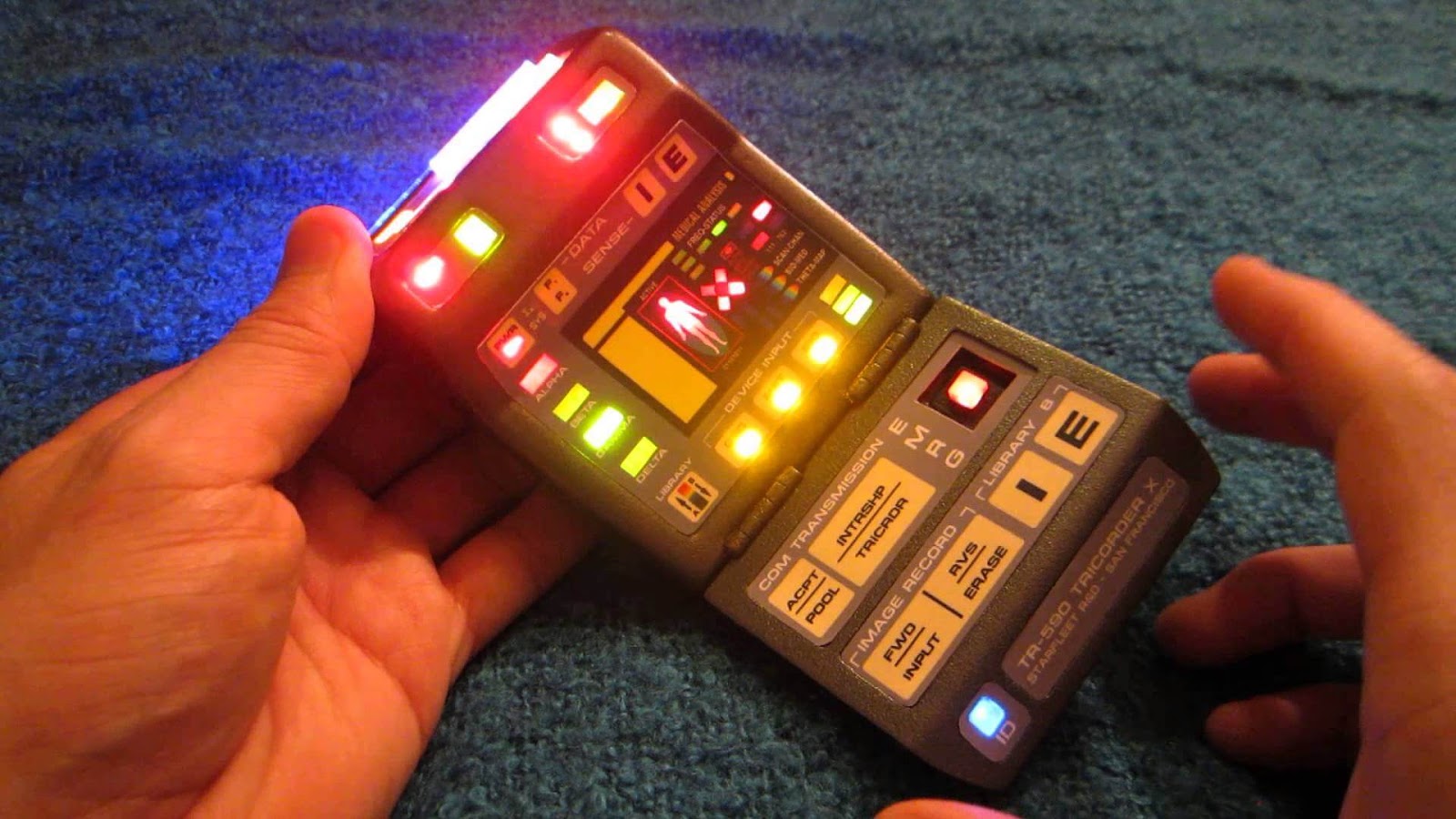You've heard the term. You know the concept. It's been around about as long as gay culture has permeated mainstream pop culture. In that time, it's usually been the fodder of lame sitcoms and urban legends—something at the expense of which we've all shared a lame Adam Sandler-laugh or two. We're talking about Gaydar, of course.
Gay + Radar = Gaydar = the innate ability to pick the gay person out of the hetero herd sans any physical confirmation, like an ass-pinching or a dance-off.
Science being science, it was only a matter of time before they got bored and lent some credence to the idea that gaydar isn't just a myth. Multiple studies have been done that suggest it's real, and we could all have it. Of course, this means that for the sake of whatever progress is being made in a cultural sense, a lot of stereotypes are also being validated. We don't endorse stereotypes unless they're either funny, or we have science on our side, which in this case we sort of do.
Here are five different scientifically proven ways people can tell if you're gay.
#1. Getting a snapshot of your face

Apparently, just because we're told not to judge a book by its cover doesn't mean we couldn't do it if we're given a couple of seconds to put our minds to it.
Tufts University Ph.D student Nicholas Rule — himself openly gay — conducted a study in 2008 in which he used 90 different male faces used in personal ads — half gay, half straight — and showed the photographs to Tufts students in six different time intervals — 10 seconds, six and a half seconds, self-paced, 100 milliseconds, 50 milliseconds and 33 milliseconds. For nearly every interval, the students correctly identified the face's sexual orientation 70% of the time.
To silence the doubters, Rule further standardized the test by using only Facebook photos of the male faces that had been tagged by others, and removed hairstyles from the photos altogether to prevent any obvious tip-offs. When tested again under the same intervals, the results were almost exactly the same. 70%. From just a face.
(Think that's good? Our robot overlords can correctly guess sexuality from a photo of a face 91% of the time, according to Stanford University researchers.)
#2. Getting a whiff of your sweat
As far as the layman is concerned, the only real thing you can tell about a person from their fresh body odor is whether they reek or not. And from there you draw your own conclusions (Brut cologne? Hmm…douchebag). But the truth is, the power of smell goes deeper than that.
In doing a study on underarm odor and sexual orientation, researchers at the Monell Chemical Senses Center in Philadelphia in 2005 asked 82 men and women to indicate their preferences among 24 sweat samples from both men and women, gay and straight. What they found out is that gay men preferred the sweat of other gay men, but also that their sweat was least preferred by straight men and women.
So…their sweat wasn't preferred by people they wouldn't have sex with in the first place. No harm there, right? Lesson? If your nose tells you you're barking up the wrong tree, it's probably right.
#3. Paying close attention to your Facebook friends
If you're still in the closet and intent on keeping your Facebook profile generic and straight-looking as possible so nobody will be any the wiser until you find a way to break the news to your father, we have bad news for you. Just analyzing the gender and sexual orientation of your friends and contacts can tip a person off, even if the rest of your profile is set to private.
Two years ago, two students at the Massachusetts Institute of Technology did a study in 2009 where they scanned the Facebook friends of more than 1,500 fellow students who openly displayed their sexual orientation and made a positively shocking revelation — gay men had proportionally more gay friends than straight ones.
It was a foolproof indicator they were so sure of that they actually devised a computer program based on the data to guess the sexual orientation of 10 Facebook users they knew to be gay but had not stated so on their profiles based on their friends alone. The program guessed right for each person. If these guys decide to make an app or something, soon we won't even need to rely on real gay people to tell us who's gay.
#4. Watching you walk
 There's a certain Bee Gee's song that helped launch John Travolta and surely get him laid a thousand times over that starts "Well you can tell by the way I use my walk I'm a woman's man, no time to talk." And as it turns out, those Bee Gees were right. You can tell a lot about a man by the way he uses his walk, and not just that he's a woman's man.
There's a certain Bee Gee's song that helped launch John Travolta and surely get him laid a thousand times over that starts "Well you can tell by the way I use my walk I'm a woman's man, no time to talk." And as it turns out, those Bee Gees were right. You can tell a lot about a man by the way he uses his walk, and not just that he's a woman's man.
According to a study in the September 2007 issue of Journal of Personality and Social Psychology, it's all in the hip sway. UCLA assistant professor Kerri Johnson and a team of colleagues attached motion sensors to eight volunteers — half gay, half straight, half male, half female — and had them walk on a treadmill to capture only their walking motion, and no other features. They then showed videotapes of the walkers at different speeds to 150 undergrads and instructed them to guess away.
And guess away, they did, to the tune of 60% accuracy in guessing the male's sexuality correctly because they banked on the notion that gay men swing their hips more freely than straight men, which they did. Sixty percent isn't overwhelming, but it's still better than chance. In guessing the female volunteer's sexuality, the undergrads didn't do as well, which they explained by saying women in our society are "permitted a greater latitude of behaviors." Basically, we Americans like women to be kinky too much to actually notice it.
#5. Listening to how you enunciate vowels
Speech patterns are often portrayed as a dead giveaway in determining a person's sexuality. A high lisp, here. An effeminate lilt, there. Maybe more enunciation and articulation than is customary. It's one thing to judge a man by his encyclopedic knowledge of show tunes, but you can't just call gay on somebody by the way they talk, right? Wrong, apparently.
Psychologists from Ohio State University very recently conducted a study where they had gay and straight men record one-syllable words like "sell," "food" and "mass" and played the recordings for test subjects via telephone. After only hearing the first two letters of each word, the subjects were able to guess which speaker was gay with 75% accuracy. How, you ask?
Well, stereotyping, pretty much. The study's lead researcher, Dr. Erik Tracy, believes that part of the judging process we go through when we come into contact with a person we've never met before includes subconscious vowel analysis of how they speak. As it turns out, gay men were able to be identified in the study because they spoke with "more expanded vowel space than heterosexual men."
Wait, so GayDar really is real?
A new study reported in Science Codex suggests that gaydar is not only real, but an automatic process that’s fairly accurate. The study, which was conducted at the University of Washington, asked 129 college students to view photographs of 96 different men and women who self-identified as gay or straight. To avoid any bias created by certain clothes, hair or piercings, the black and white photographs were tightly cropped so that only faces were visible.
Each image flashed across a computer screen for a few seconds. Researchers then asked the participants whether they thought the subject in the photo was gay or straight. When judging among women, participants were 65% accurate. That accuracy dropped slightly, to 57%, when participants were asked to pick out the gay and straight faces among men.
To further test their hypothesis, researches displayed some of the images upside-down for a mere 50 milliseconds. Participants’ gaydar accuracy fell, but not by much: 61% for images of women, 53% for images of men.
Joshua Tabak, lead author of the study, said that using gaydar could be a subconscious action simply because gay people exist. “It may be similar to how we don’t have to think about whether someone is a man or a woman or black or white,” he said. Furthermore, according to Science Codex,
Tabak also points out a potential flaw based on the study’s participant pool, noting that “people from older generations or different cultures who may not have grown up knowing they were interacting with gay people” might not have such a finely tuned gaydar. It would be great to see this study repeated with more diverse participants.
So trust your instincts and activate your gaydar next time you’re at a singles’ bar.
 CRIME Shirt $21.68 |
 DMT Has Friends For Me Shirt $21.68 |
 CRIME Shirt $21.68 |


Everyone who is touting the accuracy of their own "gaydar". You are just silly. Do you have any idea how many people there are you never suspect as gay and you never have any way/reason to find out for sure?
I was in the USAF for nearly 10 years. During that time I knew MANY homosexuals. I "dated" several guys, went on their arm to "Hail and Farewells" and so forth. In my experience, most gays are actually NOT outwardly detectable.
Lots of female military members were branded as gay because of an athletic appearance if they didn't have sex with every male who hit on them. Including me, because I was not sexually promiscuous. I can assume that the fact I didn't vehemently defend my sexual identity as straight that most accusers assumed they were right and that I was a lesbian.
The truth is that I never felt it truly mattered and I never wasted my time to prove my orientation.
Hell, there were/are even gay fighter pilots and you don't get more macho than that.
When sexual identity is less of an issue that the value of each human being, humanity will be on its way to being humane.
I think some people are just better at picking up subtle clues in others personalities and behaviors than others. If you pay close attention to someone when you're interacting with them its usually pretty easy to get a "vibe" off them as to the true personality beneath the social politeness. Not necessarily sexual orientation but whether a person is genuinely nice, trying to be manipulative, a bit conservative/liberal, possibly mentally unstable, etc. I guess you could pick up on sexual orientation as well but I think I would care more about the others.